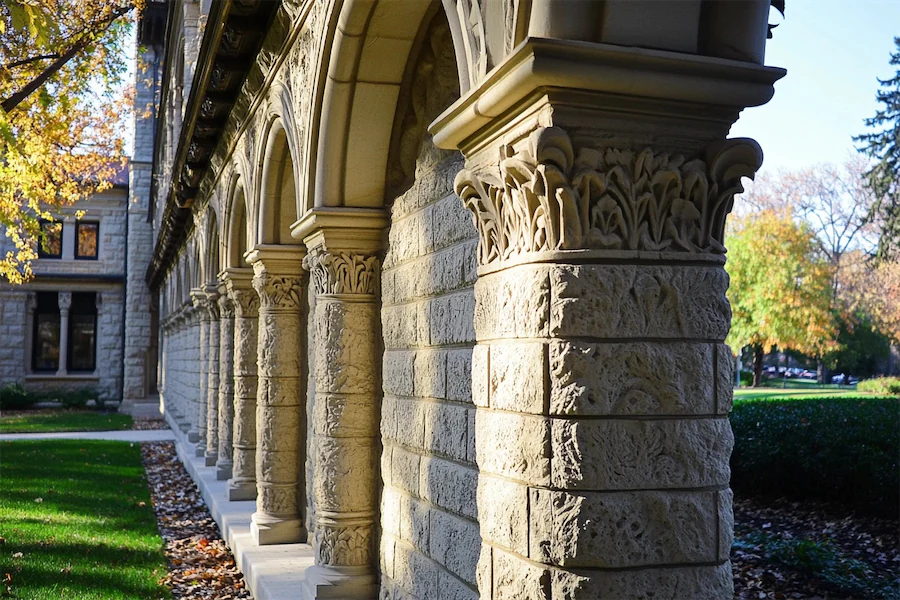Richardsonian Romanesque architecture, named after architect Henry Hobson Richardson, emerged in the late 19th century as a distinctive American adaptation of Romanesque Revival architecture.
This style is characterized by its massive stone walls, rounded arches, and robust, fortress-like appearance.
Key Features of Richardsonian Romanesque Walls
- Massive Masonry Construction: Walls are typically constructed from rough-cut, rusticated stone, imparting a sense of strength and permanence. The use of heavy masonry not only provides structural stability but also contributes to the imposing aesthetic of the style.
- Round Arches: A defining characteristic is the prominent use of wide, rounded Romanesque arches over windows, doorways, and entryways. These arches are often supported by substantial piers or grouped columns, adding to the monumental feel of the structures.
- Asymmetry and Complex Massing: The wall designs often feature asymmetrical facades with varied projections, recesses, and towers. This complexity creates a dynamic and picturesque silhouette, enhancing the visual interest of the building.
- Polychromatic Stonework: Incorporating stones of varying colors adds depth and texture to the walls, creating a visually engaging and richly textured facade.
Applications of Richardsonian Romanesque Wall Designs
Richardsonian Romanesque wall designs have been employed in various building types, including:
- Public Buildings: Structures such as courthouses and city halls adopted this style to convey authority and stability. For example, the Allegheny County Courthouse in Pittsburgh, designed by Richardson and completed in 1888, showcases the characteristic heavy stone walls and rounded arches.
- Religious Structures: Churches and cathedrals utilized the style’s monumental walls and arches to create awe-inspiring spaces. Richardson’s Trinity Church in Boston, completed in 1877, is a seminal example, featuring massive stone walls and a commanding presence.
- Residential Buildings: Some grand homes and mansions incorporated Richardsonian Romanesque elements, featuring thick stone walls and arched entrances to evoke a sense of grandeur and permanence.
Considerations When Choosing Richardsonian Romanesque Wall Designs
When considering Richardsonian Romanesque wall designs for restoration or new construction, it’s essential to:
- Source Appropriate Materials: Utilizing authentic, high-quality stone is crucial to achieving the desired aesthetic and ensuring durability. The choice of stone should reflect the regional characteristics and historical context of the building.
- Ensure Structural Integrity: The substantial weight of the masonry requires careful engineering to maintain stability and longevity. Modern adaptations may incorporate steel reinforcements to support the heavy stone walls.
- Balance Ornamentation: While the style is known for its robust and intricate detailing, it’s important to balance ornamentation with overall design coherence to avoid visual clutter. Attention to proportion and scale is key to maintaining the style’s integrity.
Conclusion
Richardsonian Romanesque walls are distinguished by their massive stone construction, rounded arches, and intricate detailing. By thoughtfully incorporating these elements, architects and designers can create structures that exude a sense of strength, permanence, and historical significance.
